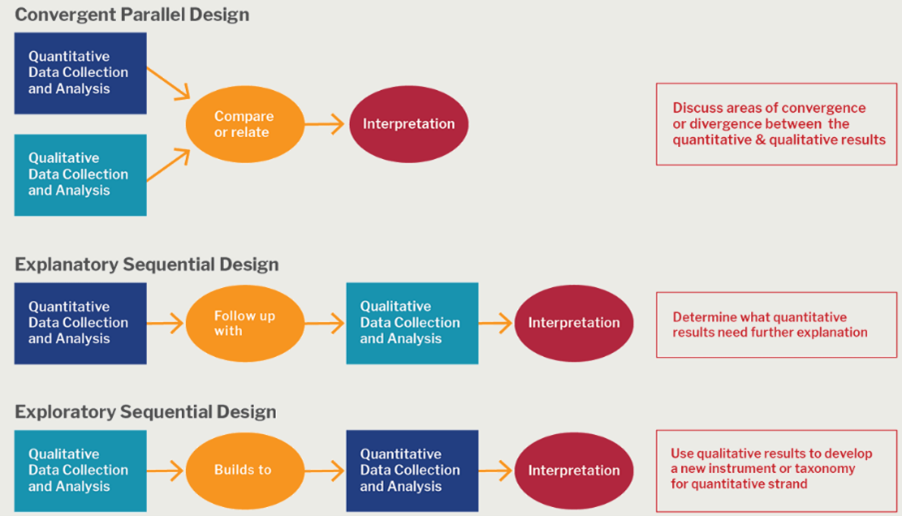Understanding the Peer Review Process: Timeline from Submission to Decision in ISI Journals
December 26, 2024
Ethical Considerations in Modern Research Practices
December 26, 2024In Avestina Research we discuss” Qualitative vs. Quantitative Research” Quantitative research involves the collection and analysis of numerical data and statistical information, whereas qualitative research focuses on the interpretation of words and the understanding of meanings. Both are crucial for acquiring diverse forms of knowledge.
Quantitative research, characterized by the use of numerical data and graphical representations, is a valuable tool for verifying hypotheses and generating universally applicable information(1). It involves the measurement of dependent and independent variables and the use of experiments and surveys as principal research designs . In clinical research, it is particularly useful for documenting prevalence and testing hypotheses (2). The results of quantitative research are often generalizable, and predictable, and provide a causal explanation (3).
Quantitative research
Quantitative research is characterized by the use of numerical data and graphical representations. It is employed to verify or validate hypotheses and assumptions. This form of study can be utilized to develop universally applicable information regarding a certain subject.
Typical quantitative methods encompass experiments, numerical observations, and surveys using closed-ended questions.
Quantitative research is susceptible to several research biases, such as information bias, omitted variable bias, sample bias, and selection bias.
Quantitative research approaches topics from several perspectives in contrast to qualitative research. Quantitative research offers exact causal explanations that can be quantified and conveyed numerically, rather than seeking subjective meaning through exploratory “how?” and “why?” queries. Qualitative researchers often engage in fieldwork, visiting participants in their homes or other natural settings. In contrast, quantitative research is typically carried out in a controlled and structured environment. Unlike qualitative research, which focuses on subjective and context-dependent issues, the objective of this research is to acquire unbiased information, such as identifying the optimal timing for a certain medical operation (4).
Qualitative research
Qualitative research is conveyed through verbal or written language. It is utilized to comprehend concepts, ideas, or experiences. This form of research allows you to acquire comprehensive knowledge about subjects that are not thoroughly comprehended(5).
Typical qualitative methods encompass conducting interviews with open-ended questions, describing observations using words, and doing literature reviews to examine concepts and hypotheses.
Qualitative research is susceptible to several research biases, such as the Hawthorne effect, observer bias, recollection bias, and social desirability bias.
Qualitative research and quantitative research differ in terms of their objectives, methodology, and design. Qualitative research seeks to obtain a deeper understanding of phenomena, groups, or experiences that cannot be accurately measured or quantified using mathematical methods. Qualitative research, unlike quantitative research, focuses on exploration rather than obtaining precise answers or figures. It utilizes many data sources such as images, journal entries, video footage, and interviews.
The differences between quantitative and qualitative research
Quantitative and qualitative research employ distinct methodologies for data collection and analysis, enabling the investigation of diverse research inquiries.
In qualitative studies, researchers typically collect data in the field from lower sample numbers, necessitating personal visits to participants’ homes or other surroundings. After the research is finished, the researcher needs to assess and interpret the data within its context, searching for trends or patterns that can lead to the creation of new theories, concepts, narratives, or hypotheses(5).
Quantitative research is commonly conducted using instruments, such as questionnaires, rather than relying on human interaction, such as a researcher conducting interviews. Another notable distinction is in the fact that, in qualitative investigations, researchers are required to analyze the data in order to formulate hypotheses. During a quantitative analysis, the researcher aims to empirically examine a hypothesis.
What’s the Difference Between a Qualitative and Quantitative Study?
Both qualitative and quantitative studies must adhere to stringent quality requirements. Nevertheless, the research methodologies employed in each category of study vary, as do the inquiries and concerns they aim to investigate or resolve. Quantitative studies typically adhere to strict frameworks in order to examine the connections or associations between various variables, ideally using a random sample. In contrast, qualitative studies sometimes involve smaller and more specific samples, such as convenience samples. Additionally, the design of these studies is frequently more adaptable and less rigid in order to fit the open-ended nature of the research.
In order to further clarify these distinctions, we have included a few instances of qualitative and quantitative research methods below.
Sources of Quantitative Research
Some illustrative techniques of quantitative research or sources encompass, but are not restricted to, the subsequent:
Performing polls, surveys, and experiments
Creating comprehensive databases of records and information
Examining the subject matter of the study, such as a particular response
Conducting a meta-analysis entails examining numerous previous research to uncover statistical trends or patterns.
Distributing digital or physical questionnaires to participants
The subsequent part will present some instances of qualitative research methods for the purpose of comparison, followed by a summary of mixed research methods that integrate elements from both approaches.
Sources of Qualitative Research
Researchers have at their disposal a wide range of qualitative methodologies that they might employ to investigate a topic or acquire a deeper understanding of an issue. Several sources or methodologies for qualitative research include the following examples:
Conducting ethnographic studies involves examining various occurrences from a cultural or group-specific perspective.
Facilitating focus groups
By analyzing a wide range of records, such as journal entries, personal letters, official papers, medical or hospital records, photographs, video or audio recordings, and even minutes from meetings
Conducting individual interviews
Collecting individual anecdotes and memories of specific incidents or personal encounters
Analyzing Qualitative and Quantitative Data
Quantitative and qualitative research employ distinct approaches for data collection, as well as for data organization and analysis. What are the recommended methods for assessing qualitative and quantitative data sets, and how do they need researchers to use distinct approaches?
How to Analyze Qualitative Data?
Below is a systematic and detailed outline of the process for analyzing qualitative data.
- Ensure that all of your data has completed compilation before commencing any analysis.
- Utilize computer-assisted qualitative data analysis software (CAQDAS) to arrange and establish connections within your data, ensuring consistency.
- Encode your data, a process that can be somewhat automated by utilizing a feedback analytics platform.
- Commence a thorough exploration of analysis, including augmented intelligence if necessary, to obtain more precise outcomes.
- Present your findings in a report, preferably utilizing captivating visual aids to effectively convey the information.
How to Analyze Quantitative Data?
There are multiple methodologies for examining quantitative data. Examples of analytical techniques include cross-tabulation, conjoint analysis, gap analysis, trend analysis, and SWOT analysis, which stands for Strengths, Weaknesses, Opportunities, and Threats.
Regardless of the system or systems you utilize, it is imperative to follow certain procedures to guarantee the meticulous organization and precise analysis of your data. Here is a concise summary consisting of four steps.
- Link measurement scales to research variables to ensure proper organization of data before proceeding.
- Associate data with descriptive statistics, such as the arithmetic mean, median, mode, or frequency.
- Select the appropriate measurement scale for your analysis.
- Arrange the data into tables and do an analysis using techniques such as cross-tabulation or Total Unduplicated Reach and Frequency (TURF) analysis.
References
1-http://ojs.spiruharet.ro/index.php/jedep/article/view/679
2-https://onlinelibrary.wiley.com/doi/10.1111/j.1423-0410.2002.tb05312.x
3-https://clsjournal.ascls.org/content/27/1/3
4- https://doi.org/10.26458/jedep.v9i4.679
5-https://clsjournal.ascls.org/content/27/1/3


